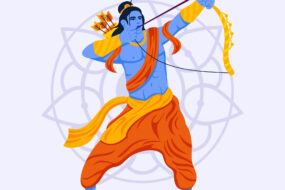
Numerous festivals are held in India, a nation known for the rich tapestry of cultures that make up its culture, showcasing the diversity and depth of its cultural heritage. A happy celebration like this is Dussehra, also known as Dussehra. Along with being a time to celebrate, this festival has significant cultural and religious significance in India. We will look into the traditions, history, and unrestrained joy of Dussehra celebrations in this fascinating country.
Dussehra Traditions and Celebrations:-
Ramlila Performances:
Ramlila, or acting out of the Ramayana, is one of the most cherished customs associated with Dussehra. From the time of Lord Rama’s birth until the end of his conflict with Ravana, this magnificent theatrical production depicts his life. Ramlila performances range in size from intimate community events to lavish productions on large stages. It encourages a sense of loyalty and unity among people of all ages.
Effigy Burning:
The most visually captivating part of Dussehra celebrations is the burning of effigies representing Ravana, his brother Meghnad, and Kumbhakarna. These enormous effigies are lit on fire after being filled with fireworks to represent the victory of good over evil. These enormous effigies are lit on fire after being filled with fireworks to represent the victory of good over evil. As the effigies are burned, crowds gather to watch the spectacle and cheer.
Religious Observances:
In various parts of India, devotees offer special prayers and perform pujas in temples dedicated to Lord Rama and Goddess Durga. Now is the time to ask for blessings for a peaceful and prosperous life. Now is the time to ask for blessings for a peaceful and prosperous life.
Cultural Extravaganza:
Dussehra celebrations transcend religious rituals and encompass a variety of cultural events. These consist of exhibitions of traditional art, food festivals, and performances of music and dance. It’s a time when communities come together to celebrate their heritage and showcase their talents.
Exchanging Gifts:
During Dussehra, giving gifts is a custom that helps to cement relationships of love and friendship. With their loved ones, people give gifts like candy, clothing, and other expressions of affection.
Victory Processions:
In some regions, grand processions are organized, with idols of Lord Rama and Goddess Durga placed on ornate chariots. These processions are accompanied by music, dance, and enthusiastic community participation. Some areas organize grand processions with idols of Lord Rama and Goddess Durga mounted on elaborate chariots, accompanied by music, dance, and enthusiastic community participation.
Conclusion
The festival of Deshara, also known as Dussehra, honors India’s rich cultural diversity, the triumph of good over evil, and the spirit of unity. The customs surrounding Dussehra serve as a catalyst for artistic expression, social interaction, and the strengthening of ties within families and communities in addition to invoking a sense of spirituality. A time of celebration, introspection, and optimism for a better and more prosperous future. Do not miss the chance to fully immerse yourself in this extraordinary celebration of heritage and faith if you ever have the chance to experience Dussehra in India.
.
Search
Recent Post
Revolutionising Industries: The Impact of AI on
- January 27, 2024
- 4 min read
Navigating the Digital Landscape: The Profound Impact
- January 24, 2024
- 3 min read
When Instagram Meets Diplomacy: The India-Maldives Controversy
- January 20, 2024
- 4 min read







